Moving up the two lane Stuart Highway, that line through the desert, barren bush, we rack up almost 74 kilometres before we bunker down at Larrimah. Stopping at the Larrimah Hotel we find Barry, the owner, who agrees to let us work in exchange for a feed and a place to rest our weary heads. In Outback-dog years, 74 kilometres is the equivalent of many months solid travel…
The small settlement of Larrimah is on the Stuart Highway 534 km south of Darwin, located between Daly Waters and Mataranka. The infamous North Australian railway - 'the line to nowhere' - was 8 km to the north at no longer existing town of Birdum. Today Larrimah is another stopover point on the Stuart Highway with a roadhouse, a caravan park, accommodation and an outback pub, The Larrimah Hotel, which was actually the pub at Birdum until it was moved to Larrimah in 1952.
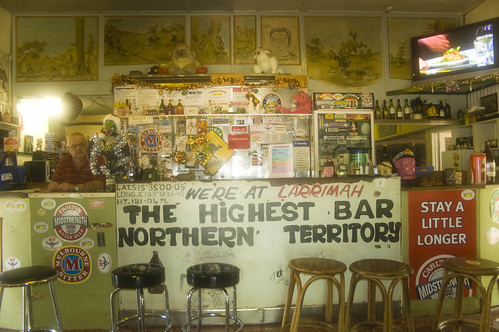
Outside it there is a nine foot Pink Panther sitting, smoking a pipe holding a fishing rod, smirking. Of course there is (a case of the sandy blight maybe, on your treck up here perhaps? I hear you heckle). No really, there it is, there, and we did not even question its presence. The fence running around the property was pink, as was the Pink Panther mobile parked to the side. Oddly accustomed to the eccentricities of the Outback by now we barely nodded in its direction.
We were soon busy working at the nearby museum at the old police station which has displays about the North Australian railway and air transport during the war with memorabilia and archive material including photographs of nearby Gorrie airfield during the war. Gorrie airfield apparently, we were told, was once one of the largest and busiest repair and maintenance bases in the Pacific during WWII with 3,000 stationed military personnel and was intended as the American's major line of defence against the Japanese should they invade. The museum was, though, closed for the summer, and it was our job to tidy the grounds, clear the dead leaves and prune back the overgrowing bush.
It did not take long, however, and with the treat of a trip to the dump to dispose of it all, we got stuck in, riding on the back of the ute, standing proud, feeling like proper bushfellas, with the wind in our sails and the breeze in our faces. Afterwards we just sort of poked around, and in a town of 12 people there is not much of that you can do. It was raining, and we were tired from our journey here (think dog years!) We were fed, and publicly zonked out watching Miss Marple on the tv in the guest lounge by the pub.

The Hotel kept an array of wildlife, and this kept us amused for a little while. With pythons, parrots, cockatoos, lorikeets, canaries, budgies, long necked turtles, and the showstoppers, two two metre saltwater crocodiles, called Sam and Snappy, who lived up to his name, leaping at the bars of the cage each time I passed by, we were amused for a bit. Not the ideal place to see my first live crocodiles, but there you go, they have a nine foot Pink Panther outside though.
The traditional owners of the land are the Yangman Aboriginal people, whose descendants now live in the nearby community of Wubuluwan and in other communities around the region. The Yangaman people believe Dreaming tracks of the Storm Bird (a Channel Bill Cuckoo) helped create the surrounding landscape.
John McDouall Stuart (the man the Highway is named after) explored this area in the late 1800s but the township of Larrimah did not spring up until 1940, when Gorrie Airfield was constructed. Prior to World War II, the now lost town of Birdum was located just south of Larrimah. Apparently, Larrimah means meeting place in the Yangaman language and the town enjoyed a brief post war boom as a railhead and service provider to surrounding cattle stations.
Once a staging camp for more than 3,000 servicemen during the Second World War, Larrimah is a classic Northern Territory outback town in that there is bugger all there to do, nothing much to see and little to keep you there, hardly anyone around, even the dogs look bored, but by-crikey do they work hard at inventing some semblance of something. The Pink Panther motif came about as a piss-take, classic Australian humour, when they were flooded in one year, with relief and help coming in slowly from the local government, they erected a pink panther sitting, fishing, to remind them that they were still there, waiting. They are still there, waiting, as is the panther.
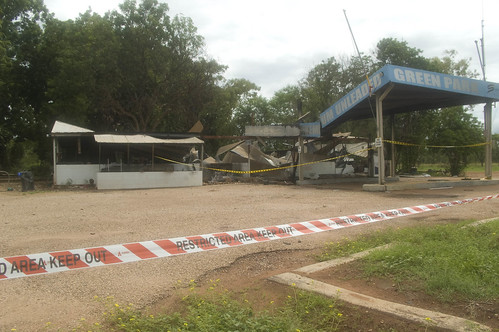
The Larrimah petrol station completely destroyed in a fire and the reson why there was no petrol for hundreds of k's
We upped and moved off first light (the one in the room, of course, because, as the man says, ‘get up on the wrong side of 12 and you don’t know yer wheat from yer onions’) and headed for Mataranka. Would we survive this 200 kilometre journey? Which one of us would be the first casualty of What’s That Smell? It was hot and muggy, the clouds were heavy, rain was imminent, signalling we were getting closer to the Tropics and the famous wet.
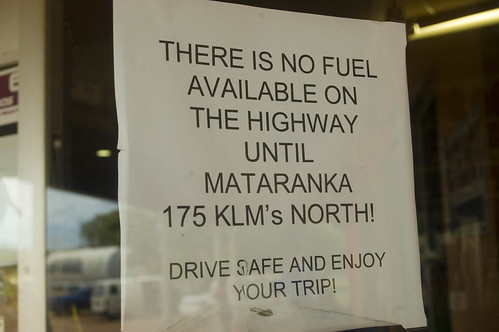
Along this highway we see many peacocks at road stations. We even see a sign 'Free peacocks, please take one if you can catch one'

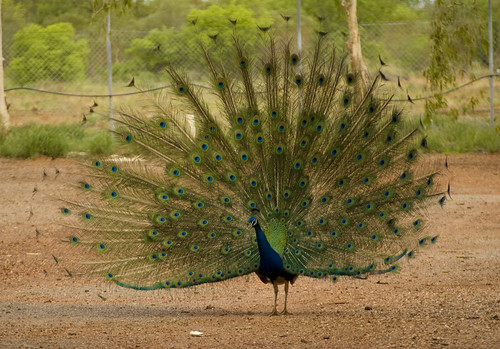
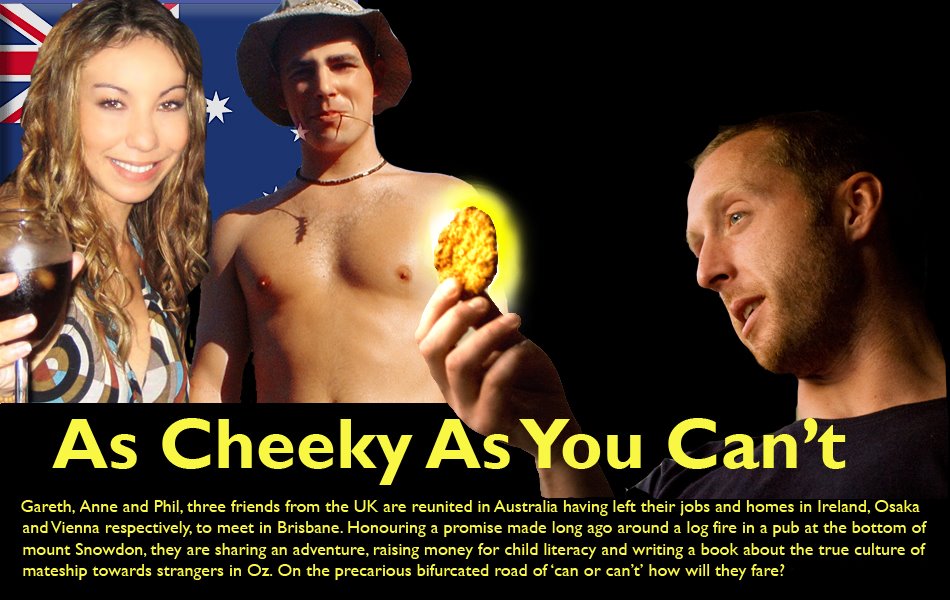




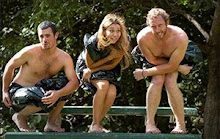
















No comments:
Post a Comment